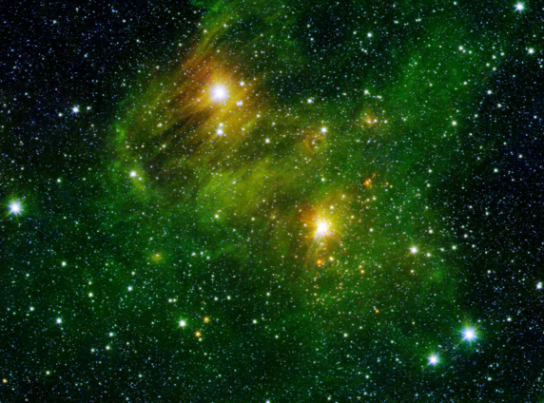
Listening to the symphony of the universe
Monday, February 15, 2016 by healthrangerinventions
http://www.healthrangerinventions.com/2016-02-15-listening-to-the-symphony-of-the-universe.html

The historic announcement of the discovery of gravitational waves, by the Laser Interferometer Gravitational-Wave Observatory (LIGO) Scientific Collaboration (LSC) on February 11, marks the beginning of an entirely new way of looking at the universe. “We are now actually about to take off,” said David Reitze, the Executive Director of the LIGO Laboratory, after making the announcement. “The new window of gravitational astronomy has just opened up.”
(Article by R. Ramachandran, republished from http://www.thehindu.com/opinion/op-ed/listening-to-the-symphony-of-the-universe/article8237558.ece)
A new paradigm
For hundreds of years since Galileo’s times, the sky was being observed with optical telescopes that looked at celestial objects either by the visible light that they emitted or by the light that was scattered off them. With advances in technology, the universe began to be observed using different wavelengths of the electromagnetic spectrum. Observational windows in radio waves, infrared and ultraviolet rays, X-rays and gamma rays opened up, and many terrestrial and space-based instruments have enabled scientists to gain new insights into the working of the universe. Neutrino astronomy, which looks at neutrinos from solar and extrasolar sources, is another window to the universe that has opened up in the last few decades. Now, the discovery of gravitational waves opens up an entirely new paradigm in observational astronomy.
The event that led to the discovery of gravitational waves — the coalescence of two orbiting black holes — has itself thrown up very interesting questions. First, it is unusual that black holes of about 30-35 solar masses squeezed into about 150 km exist; from a stellar evolution perspective, you would expect black holes to be only a few to about 10-15 solar masses.
Even more unusual is the fact there were two of them orbiting each other at about half the speed of light and merging into a single black hole of nearly double the individual masses. What are the kinds of stars that leave behind ‘stellar black holes’ with tens of solar masses? Will more such objects show up as gravitational wave astronomy evolves?
Perhaps. More such objects, and others that are entirely unexpected, may reveal themselves through their gravitational wave radiations telling us new things about the universe. The discovery has thus now tuned our ears to an entirely new and unfamiliar symphony of the universe.
To listen to the full range of that symphony, a network of terrestrial instruments similar to the LIGO interferometer in the U.S. is needed — in particular, instruments in the southern hemisphere or closer to the equator that can look at the southern sky better.
With the two instruments in Washington and Louisiana, the source of the gravitational wave that signalled its discovery could be pinpointed only within a large patch of about 600 square degrees in the southern hemisphere; a crescent-like region of about 60 degrees x 10 degrees across.
The moon subtends an angle of 0.5 degrees on the Earth — a 0.25 square degree region in the sky. So, the uncertainty in the localisation was a region as wide as about 2,500 moons stacked together; an area as large as many stellar surveys cover. That, indeed, is a huge uncertainty and astronomers would like to do better by at least an order of magnitude.
Localisation of a source is done by the technique of triangulation, with a minimum of three stations, and the accuracy of this technique increases with longer baselines between any two of the instruments. The baseline between Louisiana and Washington corresponds to just a 7-10 millisecond (ms) time delay for a signal at the speed of light.
If the interferometer at Pisa in Italy called VIRGO, which collaborates with LIGO in gravitational wave observations, had been operational on September 14, 2015, when this gravitational wave arrived, the time delay would have been about 22 ms, and the localisation accuracy would have improved to a smaller 200 square degree window.
Imagine if there had been a LIGO-India set-up and working, the time delay between LIGO and India would have been much greater, about 36-39 ms, which would have narrowed down the localisation to a small 5-10 square degree patch in the sky, which is nearly a factor of hundred better.
The maximum separation possible on the globe is 42 ms, which is between the two poles of the Earth, and the baseline delay with India would be nearly that value. Therein lies the importance of a LIGO-like instrument in this part of the world.
The Indian proposal
The Indian proposal for such an instrument has been awaiting the government’s approval for nearly four years now. The proposal was made under the Indo-U.S. cooperation agreement after a formal offer of locating an interferometer in India was made by the U.S. LIGO lab and the U.S. National Science Foundation (NSF) in October 2011. In November 2011, a formal proposal was submitted to the Department of Atomic Energy (DAE) and the Department of Science and Technology (DST) by the Indian Initiative in Gravitational-wave Observations (IndiGO) Consortium, which was formed in 2009.
According to the proposal, the U.S. would ship all the hardware required for a LIGO-India and it will be India’s responsibility to construct and operate it. Both the NSF and the Indian government would fund the project. The estimated cost was placed at Rs. 1,260 crore.
In April 2012, the Indian Atomic Energy Commission approved LIGO-India as a mega science project of the DAE following which the U.S. National Science Board (NSB) formally approved the location of an advanced LIGO detector in India in August 2012. In December that year, the National Development Council included LIGO-India as one of the mega science projects to be taken up during the 12th Plan period. Since then, the project is awaiting a formal nod of the government.
“We have not really lost all of four years’ time,” said Tarun Souradeep of the Inter-University Centre for Astronomy and Astrophysics (IUCAA), Pune, the spokesperson for IndiGO Consortium. “IndiGO people have not been just sitting idle all this while. We have been doing all the necessary groundwork, getting subsystems that we need designed, prototypes made and tested, and getting ready to start building it as soon as approval is obtained. The NSF is still banking on us and backing us because of the progress that they have seen, and we are hopeful of the approval coming through,” he said. If approved today, the three station-network — with the two instruments of LIGO-U.S. and LIGO-India — is expected to start functioning in the 2022-2024 timeframe and be operational for 10 years.
The entire infrastructure will be India’s responsibility. The three lead institutions in the execution of the project will be the IUCAA, the Institute of Plasma Research in (IPR) in Ahmedabad, and the Raja Ramanna Centre for Advanced Technology (RRCAT) in Indore.
While the IPR, which has the experience of working with high-vacuum systems, has already designed and tested prototypes of appropriate systems and components that will be required, RRCAT has designed the components and material required for ultra-stable low-frequency sub-kilohertz lasers, which would be identical to the existing LIGO devices.
From an initial set of 22 potential sites, the group has also shortlisted two for the instrument: one at Kalyanpura near Udaipur/Chittorgarh in Rajasthan and the other at Aundha near Hingoli in Maharashtra. The IPR has drawn up a plan for its construction and the Tata Consulting Engineers Ltd. has completed a feasibility study of the project.
Since it is a project of the DAE of over Rs. 500 crore, it needs the approval of the Cabinet Committee on Security (CCS). Only after that will it go through the process of financial approval and so on. The Prime Minister’s in principle-approval through a Twitter message is, therefore, highly significant, as he is the Minister for Atomic Energy, the key ministry for this project.
“An Indian mega gravitational wave astronomy project, especially in the wake of this historic discovery, means a great opportunity for showcasing Indian capability at the cutting-edge of science and technology,” said Mr. Souradeep. “It will also enrich technological areas like precision metrology, photonics and control systems. But most importantly, it will inspire coming generations of young Indians to engage in international scientific research within the country.”
Read more at: http://www.thehindu.com/opinion/op-ed/listening-to-the-symphony-of-the-universe/article8237558.ece
Tagged Under: Tags: Gravitational Waves, Laser Interferometer, scientific equipment





